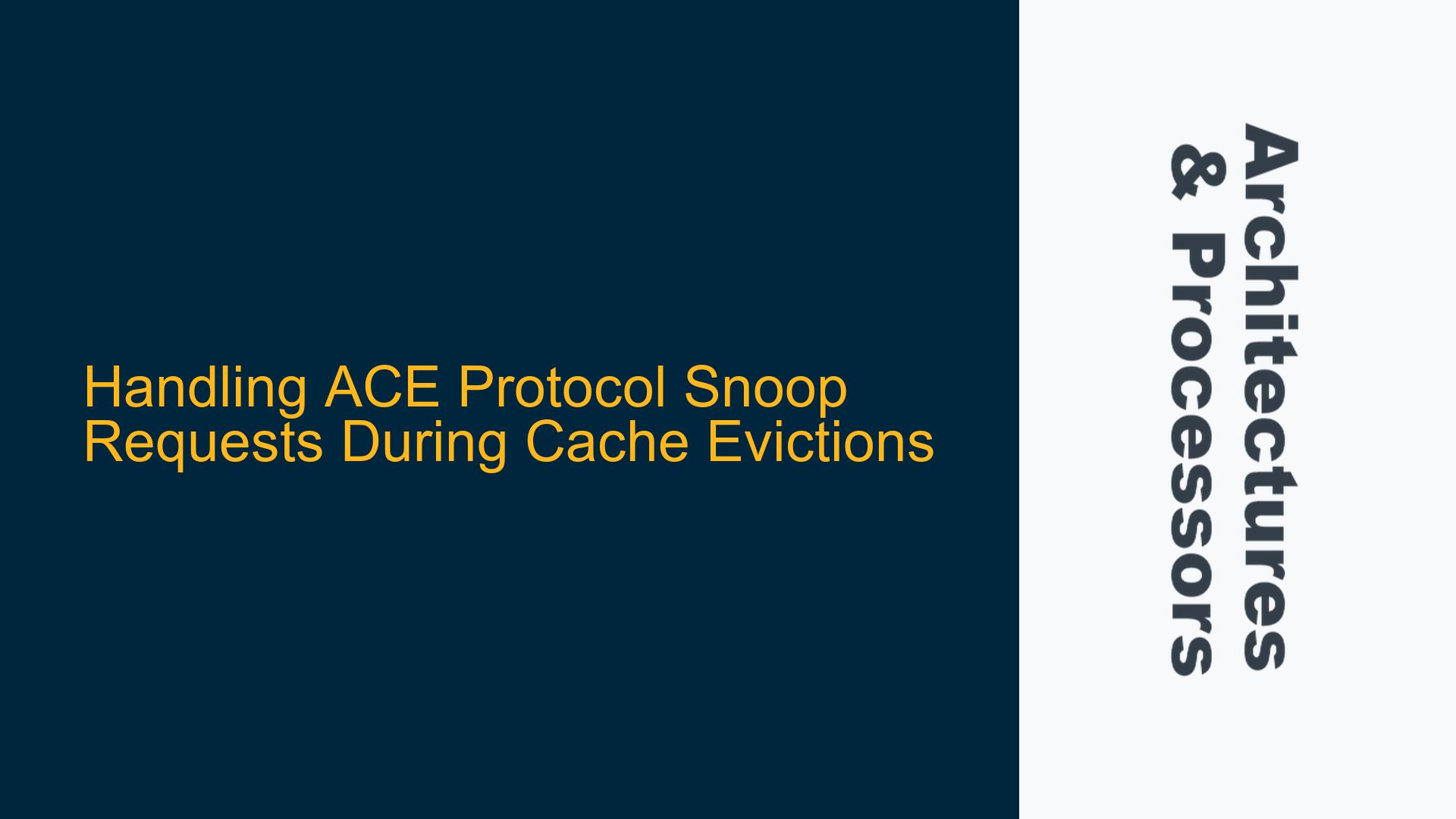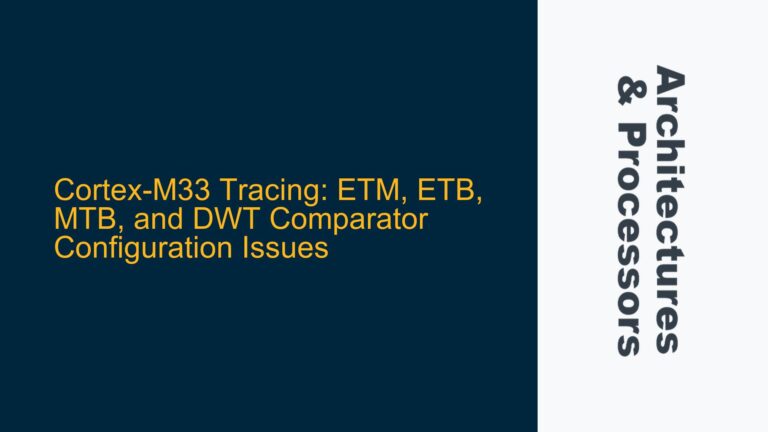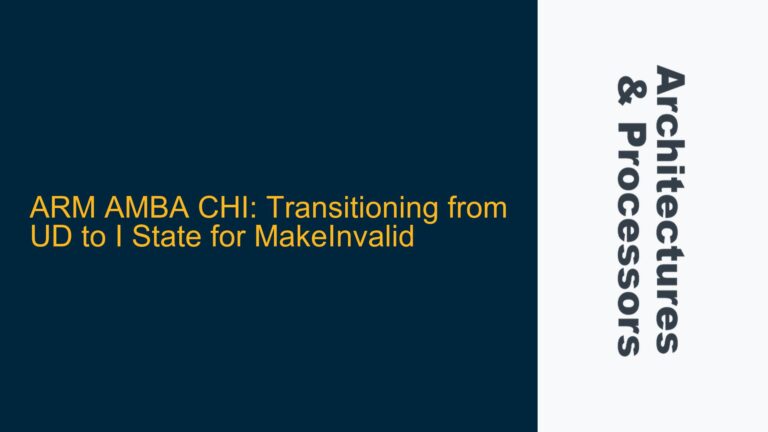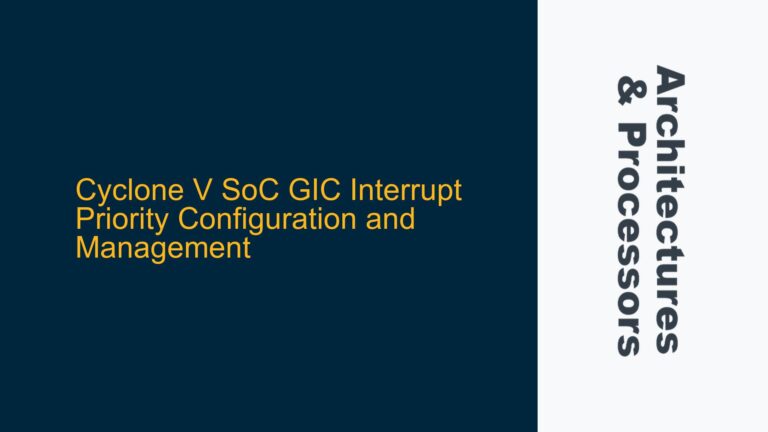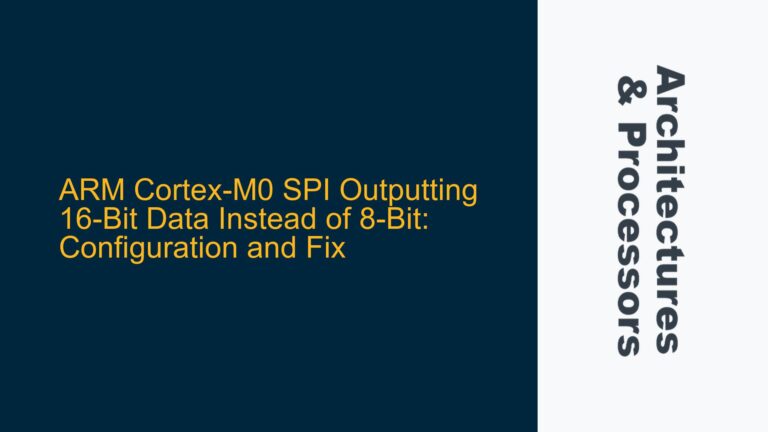ACE Protocol Snoop Request and Cache Eviction Collision
In ARM-based SoC designs utilizing the ACE (AXI Coherency Extensions) protocol, a critical scenario arises when a cache eviction and a snoop request target the same address simultaneously. This situation creates a conflict between the cache’s eviction process and the interconnect’s snoop request, leading to potential coherency and data integrity issues. The cache is in the process of evicting a line, while the interconnect issues a snoop request for the same address. The cache has already initiated the eviction by asserting AWVALID on the write address channel, and the interconnect has asserted ACVALID on the snoop address channel but is waiting for ACREADY from the cache. This collision raises questions about how the cache should respond to the snoop request, especially when the snoop filter indicates a hit, but the cache line is no longer present due to the ongoing eviction.
The core of the issue lies in the timing and coordination between the cache eviction and the snoop request. The cache is in a transitional state where the line being evicted is no longer in the cache but has not yet been written back to main memory. The interconnect, relying on the snoop filter, expects the line to be present in the cache. This mismatch can lead to incorrect snoop responses, potentially violating the coherency protocol and causing data corruption or loss.
Snoop Filter Mismatch and Cache Transition State
The primary cause of this issue is the mismatch between the snoop filter’s state and the cache’s actual state during the eviction process. The snoop filter, which tracks the presence of cache lines in various caches, may indicate that a line is present in the cache when, in fact, the line is being evicted. This discrepancy arises because the snoop filter is not immediately updated when a cache line is evicted. Instead, the snoop filter is updated after the eviction is complete and the line has been written back to main memory.
Another contributing factor is the timing of the snoop request relative to the cache eviction. If the snoop request arrives at the same time as the cache is evicting the line, the cache may not have had the opportunity to update its internal state to reflect the eviction. This timing issue is exacerbated by the fact that the cache and the interconnect operate on different clocks or have different latencies, leading to a race condition where the snoop request and the eviction process overlap.
The cache’s response to the snoop request is also influenced by the ACE protocol’s requirements. According to the ACE specification, the cache must either provide a snoop response indicating that the line is not present or delay the snoop response until the eviction is complete. The choice between these options depends on the cache’s implementation and the specific requirements of the SoC design. However, in either case, the cache must ensure that the snoop response is consistent with the actual state of the cache line and does not violate the coherency protocol.
Implementing Delayed Snoop Responses and Cache State Management
To resolve the issue of snoop requests colliding with cache evictions, the cache must implement a mechanism to handle delayed snoop responses and manage its internal state during the eviction process. The cache should delay the snoop response until the eviction is complete and the line has been written back to main memory. This approach ensures that the snoop response accurately reflects the state of the cache line and prevents the interconnect from fetching stale data from the cache.
The cache should also update its internal state to reflect the eviction before responding to the snoop request. This update includes marking the cache line as invalid and updating the snoop filter to indicate that the line is no longer present in the cache. By doing so, the cache ensures that subsequent snoop requests for the same address will not result in a hit, preventing further coherency issues.
In addition to delaying the snoop response, the cache should implement a mechanism to handle the case where the snoop request arrives before the eviction is complete. This mechanism involves buffering the snoop request and associating it with the eviction process. Once the eviction is complete, the cache can then generate the appropriate snoop response based on the final state of the cache line.
The interconnect must also be designed to handle delayed snoop responses. The interconnect should be able to wait for the cache to complete the eviction and provide the snoop response before proceeding with the transaction. This requires the interconnect to have a mechanism to track pending snoop requests and associate them with the corresponding cache evictions.
To ensure that the cache and interconnect operate correctly in this scenario, the SoC design must include thorough verification and testing. This verification should include corner cases where snoop requests and cache evictions occur simultaneously, as well as cases where the snoop request arrives just before or just after the eviction. The verification process should also include checks to ensure that the snoop filter is updated correctly and that the cache’s internal state is consistent with the snoop filter’s state.
In conclusion, handling snoop requests during cache evictions in ACE protocol-based SoCs requires careful coordination between the cache and the interconnect. The cache must implement mechanisms to delay snoop responses and manage its internal state during evictions, while the interconnect must be designed to handle delayed responses. Thorough verification and testing are essential to ensure that the design meets the requirements of the ACE protocol and maintains data coherency. By addressing these challenges, SoC designers can ensure that their designs are robust and reliable, even in the face of complex timing and coherency issues.
